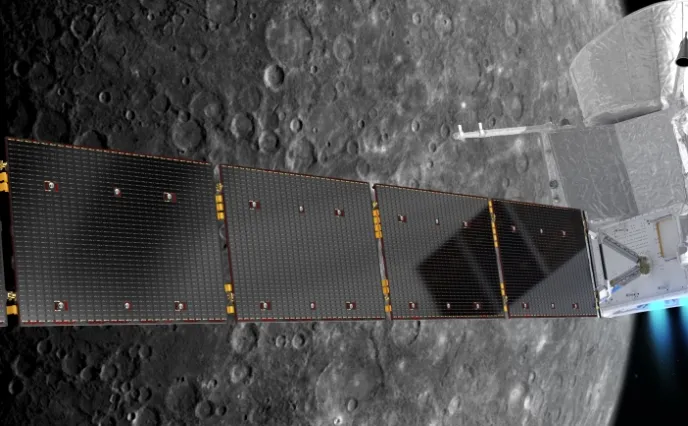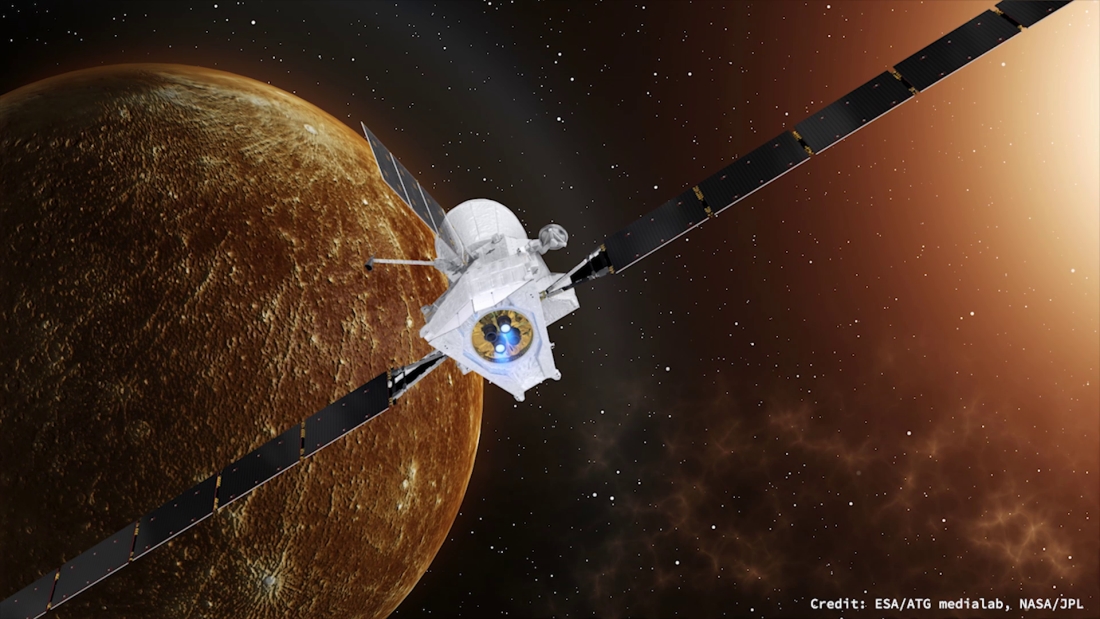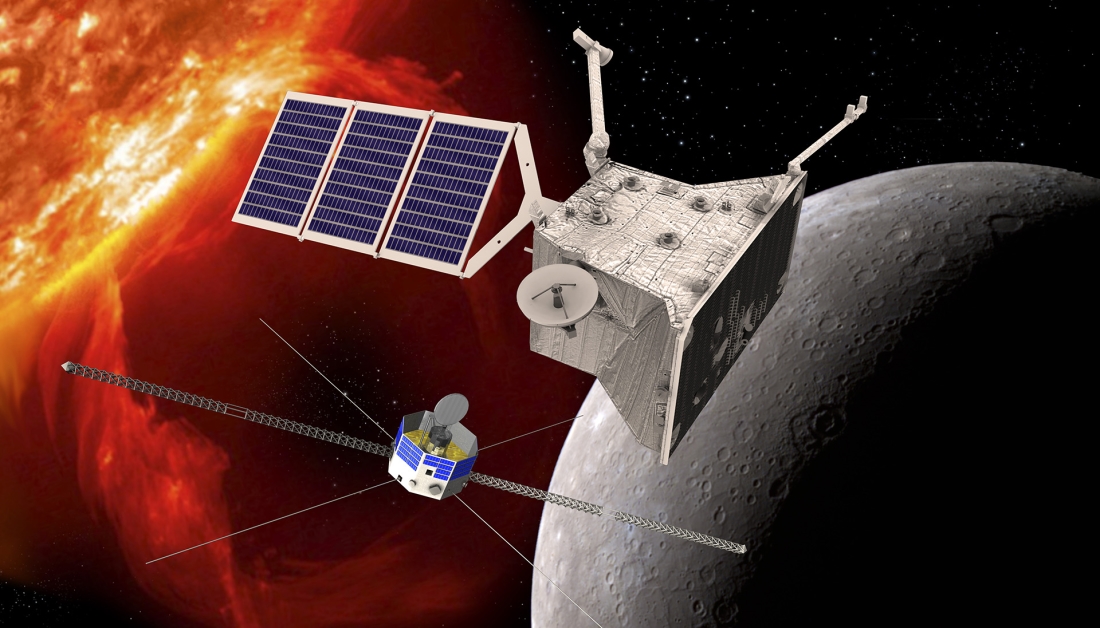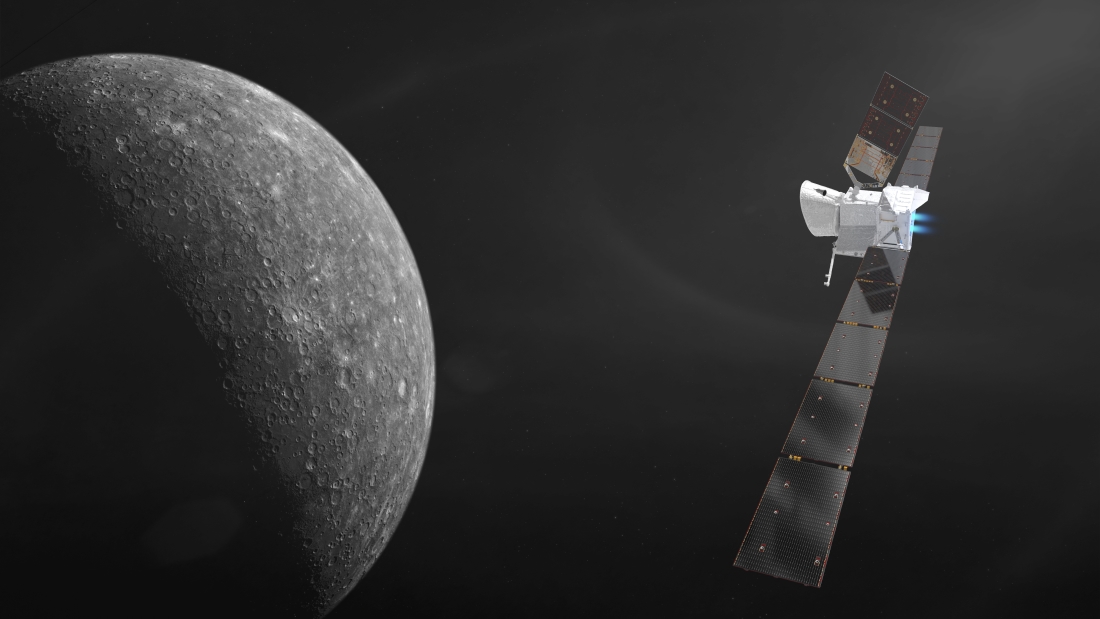BepiColombo on its way to Mercury

BepiColombo on its way to Mercury
BepiColombo is continuing along an interplanetary trajectory which will gradually bring it to Mercury, the closest planet to the sun. The spacecraft has already covered over 450 million kilometers out of a 9-billion-kilometer journey to its “red hot” destination.
Launched on October 20, 2018 from the Guiana Space Center in Kourou, French Guiana, BepiColombo completed the Near Earth Commissioning Phase (NECP). The European Space Agency (ESA) had announced that BepiColombo successfully passed its Mission Commissioning Review, meaning that the spacecraft was healthy and ready to continue its trip across the Solar System.

The NECP is an essential phase, since it provides the green light for the next steps in this ESA/JAXA (Japanese Space Agency) mission. Taking place several months after launch, this phase evaluates the performance of the Mercury Transfer Module (MTM), which is carrying ESA's Mercury Planetary Orbiter (MPO) and Japan's Mercury Magnetospheric Orbiter (MMO), while their systems and subsystems have undergone constant monitoring. The aim is of course to make sure that the propulsion, communications, thermal protection, power generation, data collection and other units are all working properly.
ESA recently announced in Darmstadt, Germany that the NECP was a success, including positive feedback from antennas, transponder, thermal control, electrical distribution and onboard computers – all components to which Thales Alenia Space made a significant contribution.
The NECP also included an evaluation of the spacecraft’s scientific instruments, which are of course the key to the ultimate mission objective of studying Mercury.

The European mission is led by Airbus Defence & Space as prime contractor, working on behalf of ESA. Thales Alenia Space is part of the industry core team, coordinating 35 different European companies. In particular, Thales Alenia Space is in charge of telecommunications, thermal control and the electrical distribution system, as well as integration and testing of the overall spacecraft, plus support services during the launch campaign. The company is also supplying X and Ka-band transponders, onboard computers, mass memory and the 1.1 meter high-gain antenna used for communications between spacecraft and ground, along with the scientific experiment for the radio mission. This antenna is derived from the model developed for the successful Cassini-Huygens mission.

Thales Alenia Space teamed up with the Italian space agency ASI and Sapienza University of Rome to develop two of the “passengers”: Italian Spring Accelerometer (ISA), and the Radio Science Experiment MORE, both used to study the planet as well as conduct further tests on Einstein’s theory of General Relativity. The European Space Operations Center (ESOC) in Darmstadt announced that these instruments are in good condition and ready to spring into action.
BepiColombo will conduct an Earth flyby on April 13, 2020 as it receives an additional gravity boost to continue on its journey to Venus, the Sun and Mercury… and help us answer some of our oldest questions about the Solar System, and even the Universe.
Photos copyrights: ©ESA/ATG mediaLab

